
Surface degradation due to friction typically arises from lubrication problems. Linear-motion designs that address this problem are realistic, effective, and affordable.
By Bruce Gretz, Executive V.P. | Steinmeyer Inc.
Maximizing uptime and avoiding downtime for unscheduled maintenance are key to productivity. Mechanical wear of moving parts, particularly the positioning systems, is the most common reason for motion-design malfunctions. Here, surface degradation due to friction typically arises from lack of proper lubrication.
Consider how machine tools are manufactured to last for decades with continuous service and minimal downtime. This is only possible if users follow proper maintenance and service intervals. In fact, linear motion (from ball screws and other linear components) is one of the most critical functions of any machine tool, as it has a direct impact on accuracy and repeatability of the end product.
Premium machine-tool companies such as Gleason are particularly focused on ensuring that ball screw performance remains within their exacting specifications. A practical approach to lubrication and innovations in ball screw design lets these machine-tool companies fulfill their promise to their end users.
In the case of ball screw drives, extending the lubrication cycle has an immediate and measureable impact on machine tool uptime. So it’s no wonder that some suppliers make marketing claims that imply their rotary-to-linear components are zero-maintenance. Such claims are incredible and beg the question: Can a ball screw really be infinitely lubricated? The answer is no. Explanation after the jump.

Engineers with an understanding of tribology can confirm that claims of zero maintenance are too good to be true. That said, it is possible to design a ball screw with a much longer lubrication cycle than typical … to serve as linear-motion axes needing minimal maintenance.
What zero-maintenance really means
First things first. The term zero-maintenance in the context of ball screws usually means one of two things. Either the ball screw has no lubrication at all and runs dry, or the ball screw keeps its lubricant for the length of its useful life. Practically speaking, neither design is sustainable for truly long-term operation. That’s because ball screws require a minimal amount of lubricant to allow the balls to recirculate.
If the designer attempts to use a dry lubricant, the balls will soon jam. That’s especially risky under slow or reversing movements.
Keeping lubricant for the entire life of the ball screw is equally impractical. This is a viable lubrication approach for rotary bearings, which can be sealed. But the same doesn’t apply to linear bearings, as the linear strokes of the nut causes lubricant to seep out.
Consider how some vendors advertise ball screws that are lubed for life at high loads. Ball screws billed to deliver maintenance-free operation and high performance sometimes fail, as high loading naturally decreases ball screw life. In other words, this combination is impossible not because the maintenance interval is so long, but because the life of the ball screw is so short.
It’s a design-parameter situation much like one in the racecar world. Bugatti offers a 1,001-hp sports car that boasts a top speed of 200 mph. If a person drives the car that fast, it will run out of gas in 15 minutes. Even more comical is that the tires will melt in 12 minutes.
Some linear-motion vendors also sell lubrication units that mount inside the nut. These are usually plastic rings impregnated with oil. Such designs extend the time between maintenance intervals early on, but the plastic rings can eventually run out of lubricant. At that point, the end user must send the screw back to have the manufacturer replace the lubrication unit, or revert to typical lubrication methods. Furthermore, the end user has little say in what type of lubricant gets used and is stuck with whatever the plastic rings carry. Given these caveats, sometimes the features of this setup can’t improve motion designs.
Practical approach to lubrication
All ball screws are pre-lubricated at the factory. The ongoing maintenance cycle depends greatly on the application. Periodic attention to the lubrication can significantly minimize unscheduled maintenance and downtime. For most machine tools, ball screw manufacturers recommend the first lube check at 500 hours. Depending on the results of this check, machine tool users may set future intervals shorter or longer.

The ball screw’s lubrication reservoir and wiper system must be designed to minimize lubricant loss while providing maximum wear protection. Ideally, the supply of lubricant and ability to seal the nut from fine particles should be combined into a single unit.
This capability is embodied in an innovation called a combination wiper. Combination wipers are plastic wipers with an additional felt wiper inside the ball nut. Felt is an excellent absorber of oil, so it acts as a reservoir. However, it must be protected from water or water based fluids. That is one function of the additional plastic wiper.
Combination wipers increase the nut length slightly, but offer important advantages:
- Superior dual stage sealing
- Reduced maintenance
- Reduced oil consumption (75 to 90%)
- Refillable
- Choice of lubricant
These last two points are especially notable compared to oil-impregnated plastics. With the inclusion of felt, users can easily refill during normal maintenance intervals, while also using the lubricant of their choice.
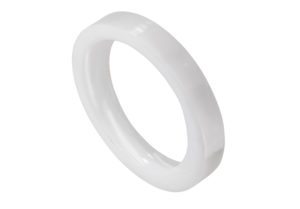
If the duty cycle is such that an elastohydrodynamic (EHD) lubrication film can build over a significant part of the motion, then oil lubrication (with a properly selected oil grade and viscosity) will always outperform grease in terms of wear. On the other hand, grease has an edge at slow speeds because it offers better wear protection under mixed friction or boundary friction conditions. Grease can also work for long-term or for-life lubrication. Lubricant loss with grease is lower than with oil.
First of all, the coefficient of friction isn’t correlated to the wear rate. Some lubricants yielded low friction, but higher wear at the same time. In addition, wear rates of some greases show that these lubricants really are universal — because they offer moderate wear protection at both slow and fast speeds. At higher speeds, both oils built a hydrodynamic lube film … so make for extremely low ball screw wear rates.
Consider how in some tests, plain mineral oil without wear-inhibiting additive (Vactra4) yielded excessive wear rate at slow speed, despite its high viscosity. It was unable to protect the friction partners once speed fell below the threshold to build a hydrodynamic film. It was squeezed out of the contact patch and did not sufficiently reduce wear in boundary conditions.
In contrast, oil with high-pressure wear-inhibiting additives (EP oil), which can bond its hydrocarbon molecules to metal surfaces through chemical or physical reaction, performs much better during conditions of boundary friction.
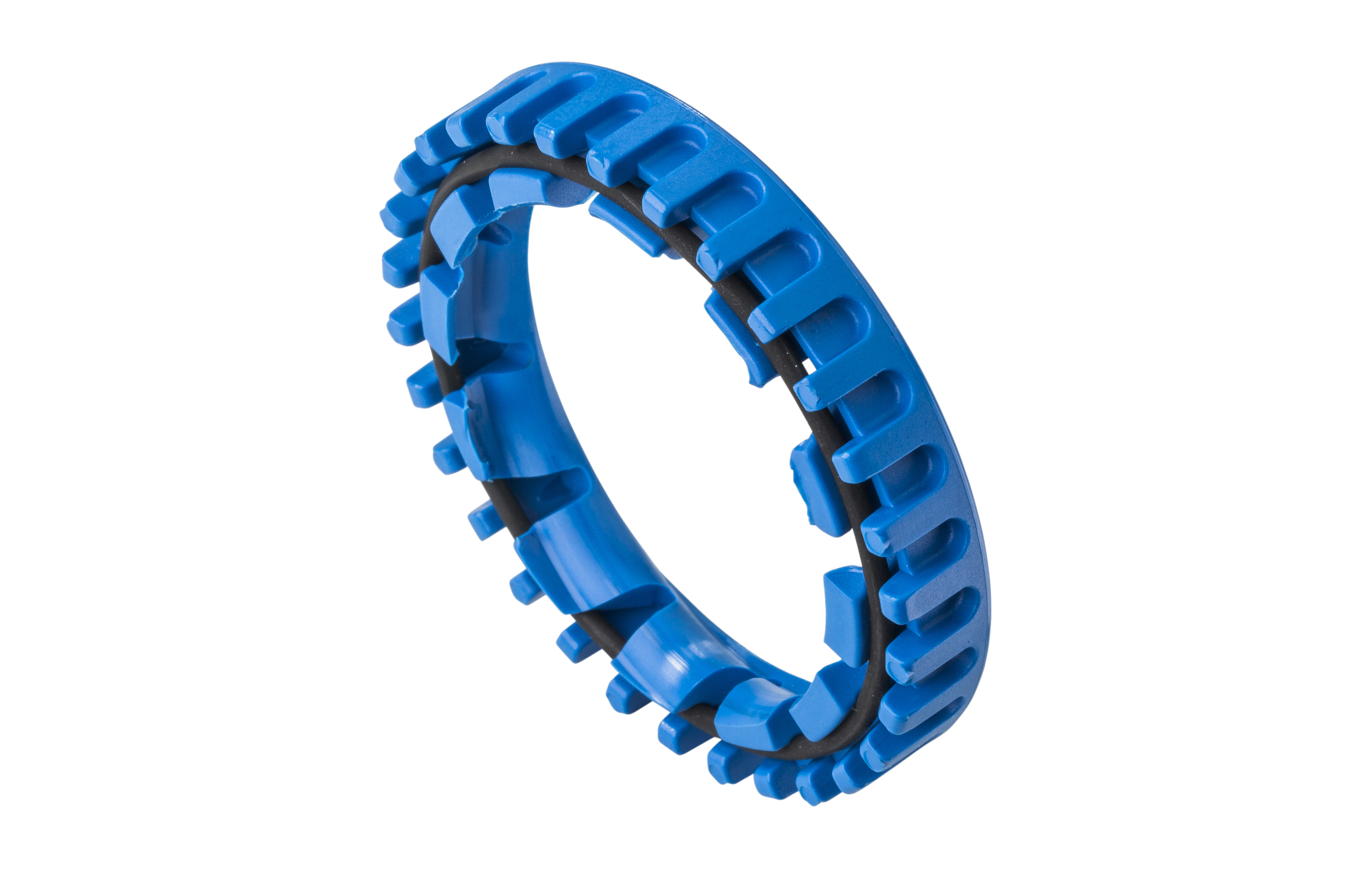
With the exception of a high-pressure grease, which causes lubricant film to collapse at high speeds, all greases perform well and yield acceptable wear rates throughout the test scenario. At the same time, tests show that greases can’t build a perfect fluid film like oils of proper viscosity, so the wear rate with grease lubrication is higher than the wear rate of oil when an EHD film is present.

How manufacturers understand ball screw lubricant behavior
On behalf of Steinmeyer and thorough a European engineering-consortium EUREKA project — sponsored by the KTI (Commission for Technological Interchange) — Swiss tribology laboratory CSEM (Centre Suisse d’Electronique et Microtechnique) recently designed and conducted a test for commonly used lubricants under the specific tribological conditions found in ball screws.
The laboratory used a modified pin-on-disc tribometer with the pin replaced by a regular 52100-steel ball bearing riding a rotating disc made from the same material (heat treated and ground as a ball screw raceway). The laboratory made the material and surface finish of the disc and ball closely resemble the friction partners in a ball nut.
Surface loads and relative speeds in two test series simulated slow-moving and fast ball screws. Because pin-on-disc tribometer causes pure sliding instead of the sliding and rolling typical for a ball screw, the speeds were adjusted to the sliding portion of typical mid-size ball screw kinematics — running at about 50 rpm (for 0.04 cm/sec in the tribometer) and 1,000 rpm (for 32 cm/sec). This closely simulated the lubrication film buildup and wear of real tribological conditions in a ball screw.
Follow this link to view a general discussion of the differences between grease and oil lubrication and the results of a scientific test of several commonly used lubricants by the tribology lab of CSEM at Neuchâtel/Switzerland.

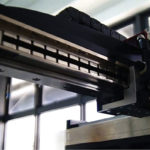
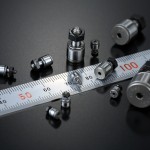
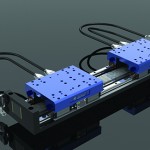
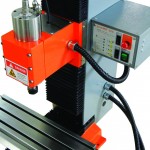


Leave a Reply
You must be logged in to post a comment.